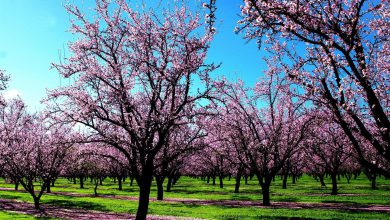Chaharshanbe Suri is an Iranian traditional event that is very important and popular among Iranian people. Each year people throw a party with their friends and family members. People celebrate the last Tuesday of the year. There are different traditions and specific foods alongside snacks for this night which I want to tell you about them.

So at this festival, people go to the street every year and gather together, to make a fire because fire symbolizes Chaharshanbe Suri. Generally, they make a fire, listen to music, eat, and laugh together.
People dance to cheerful music and gather around a fire to socialize with their neighbors, creating a festive atmosphere in the street.

On this winter night, that is the last Tuesday of the year and before the coming spring, Iranians jump over the fire and put their yellowness, coldness, and illnesses on fire. On the other hand, they get warmth and health from the red fire.

Fesenjoon stew is one of the specific and famous dishes of this ceremony and most people cook this stew on Chaharshanbe Suri and serve it during family get-togethers. Fesenjoon is made with walnuts and meat also people eat that with rice.
Some of these traditions are different in different cities and provinces. For example, there are several dishes for the Chaharshanbe Suri dinner. Morasa Polo, Reshteh Polo, Torshi Tareh stew, and many other dishes are cooked by people in Chaharshanbe Suri.
Special snacks for Chaharshanbe Suri are a combination of nuts and dried fruits. Almonds, cashews, hazelnuts, walnuts, and pistachios, as well as dried apricots, raisins, and some traditional Iranian sweets like Baslogh, are served together.
As I mentioned, the mixture of these nuts and dried fruits also is different in each city and province of Iran but, this is a common mix of Chaharshanbe Suri nuts. Also, some snacks such as roasted hemp seeds, Noghl, which is a traditional Iranian sweet, puffed rice, and puffed wheat are served on Chaharshanbe Suri night.

On this night, it is a tradition to read Hafez’s book. Family members gather together, and one of them reads Hafez’s poems to the family. This tradition is usually carried out by the elderly members of the family.
Hafez is an Iranian poet who is very well-known among Persians and also other people in the world. Iranians really like Hafez’s poems and they enjoy reading Hafez on special nights. I think it is a lovely cultural tradition and I have many beautiful memories of this night especially reading Hafez.

The Narcissus flower is a beautiful member of the Chaharshanbe Suri table. The Narcissus flower is a sign of hope and courage because it can stubborn the spring for several consecutive years after the frost of the winter.
This symbol can remind us that there is always hope in despair and we should never despair of God’s mercy. As good as it is a symbol of happiness and cheerfulness, and it beautifies the table of this night with its beauty and delightful fragrance.





